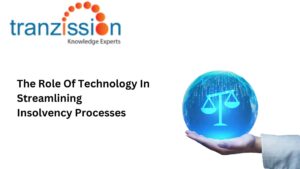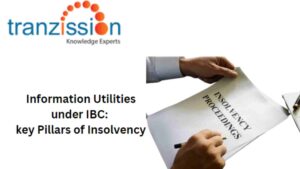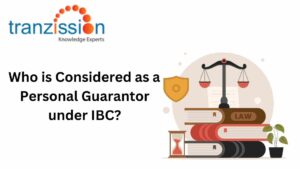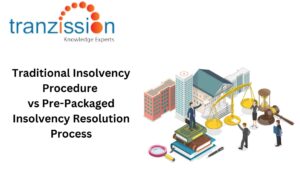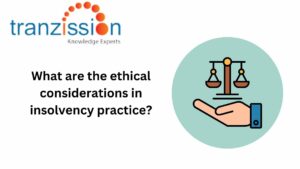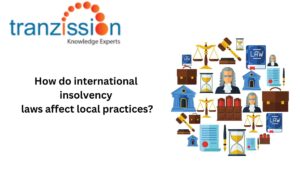
Company Liquidation Process in India Under IBC
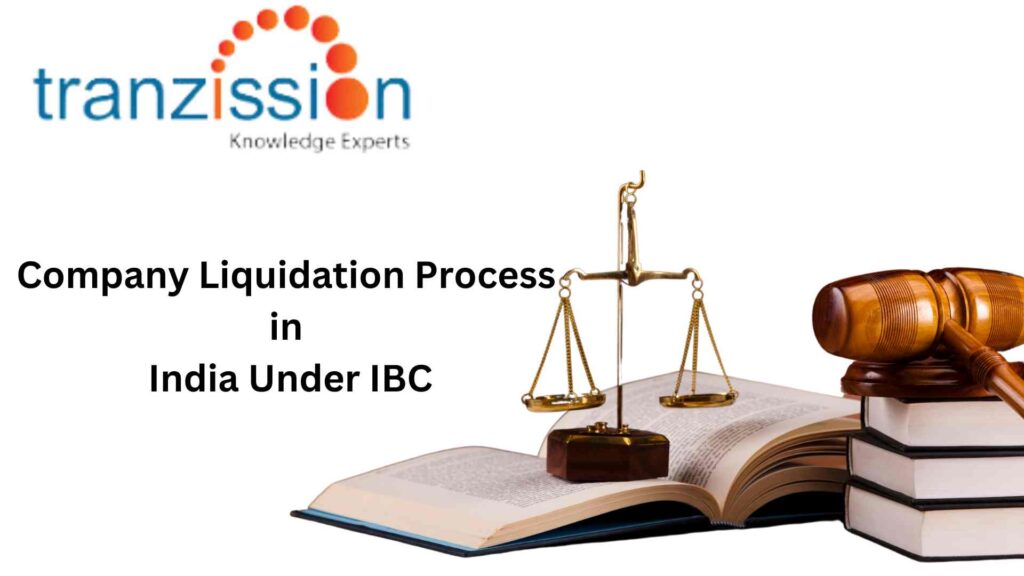
Table of Contents
Liquidation essentially means that the revival or restructuring of the company was unsuccessful. The Company Liquidation Process is the final step of the insolvency process under the Insolvency and Bankruptcy Code, 2016 (IBC). Under IBC and the relevant regulations, there is a systematic manner in handling the process of company liquidation
What is liquidation of a company?
The term of ‘liquidation’ is not provided specifically defined under the IBC, however through the liquidation process given under Part II, Chapter III under the IBC, it can be implied of what it is. The liquidation of a company is a process in which the company’s operations are terminated and the company is wound up. The process includes selling the assets of the company, using these proceeds to pay the creditors, and the remaining assets are distributed amongst the shareholders.
What are the types of liquidation of a company?
There are two types of liquidation of a company, i.e., compulsory liquidation and voluntary liquidation. The compulsory liquidation process is initiated under section 33 when the resolution plan has failed or when the company fails to pay their debts by the Adjudicating Authority, the National Company Law Tribunal (NCLT). The process of compulsory liquidation is also governed under the Insolvency and Bankruptcy Board of India (Liquidation Process) Regulations, 2016 (hereon forward known as “Liquidation Process Regulations”) The process of Voluntary liquidation is initiated under section 59 of the IBC by the company when the creditors of the company or the shareholders decide that the company should be wound up as per the process given under the Insolvency and Bankruptcy Board of India (Voluntary Liquidation Process) Regulations, 2017 (hereon forward known as “Voluntary Liquidation Process Regulations”).
What are important terms needed to understand liquidation under IBC
(i) Claim: A claim under section 3(6) is
(ii) Corporate Debtor: A corporate debtor is given under section 3(8) is a corporate person who owes a debt to any person under the insolvency process.
(iii) Creditor: Section 3(10) defines a creditor to any person to whom a debt is owed. There are two types of creditors given here, the financial creditor and operational creditor.
(iv) Financial Creditor: Any person to whom a financial debt, such as money borrowed against the payment of interest, is owed as defined under section 5(7). There are two types of financial creditors: secured creditors and unsecured creditors.
(v) Secured Creditor: A secured creditor under section 3(30) means is a financial creditor in favour of whom security interest is created.
(vi) Unsecured Creditor: This term is not defined in the IBC or Regulations,
(vii) Operational Creditors: An operational creditor, as per section 5(20), means any personal to whom an operational debt, such as provision of goods or services, is owed.
(viii) Liquidation Cost: Under section 5(16) the liquidation cost is any cost that is incurred by the liquidator during the period of liquidation. For instance, as per Regulation 2(1)(ea) of Liquidation Process Regulations includes costs to be given to the liquidator such as the fee and remuneration payable to the liquidator and costs incurred by the liquidator during liquidation such as those for the carrying on the business of the corporate debtor as a going concern. The liquidators remuneration is part of the liquidation cost under Regulation 7 of the Voluntary Liquidation Process Regulations.
(ix) Liquidation Commencement Date: The Liquidation Commencement Date (LCD) is the date on which the liquidation proceedings commence for compulsory liquidation or voluntary proceedings as defined under section 5(17) of IBC.
(x) Corporate Insolvency Resolution Process: The definition of the Corporate Insolvency Resolution Process (CIRP) is not particularly defined under IBC, it is a process for resolving insolvency of the company. It has the main aim to rehabilitate, restructure or revive a financially distressed company. If this rehabilitation, restructuring, or revival of a company has failed, then the company moves forward with liquidation.
What is the liquidation order of a company?
The liquidation order is not particularly defined under the IBC, but through the provisions of IBC and the relevant regulations, it can be implied.
As per section 33 of the IBC, the conditions of the liquidation order are:
(i) Under section 33(1)(a), the liquidation order may be given by the NCLT if the resolution plan was not received during the time period specified under the IBC for the completion of the insolvency resolution process or the fast track corporate insolvency resolution process, then further measures may be required
(ii) Section 33(1)(b), the resolution plan is rejected under the NCLT for non-compliance of the requirements of section 31.
(iii) By the decision of the Committee of Creditors (CoC) to liquidate the company, by not less than 66% of the CoC, initiated by the resolution professional (RP) at anytime before the confirmation of the resolution plan.
(iv) If the NCLT decides that the corporate debtor has contravened the provisions of the resolution plan as given under section 33(3).
What is the process of liquidation of a company?
The liquidation process of a company commences when the rehabilitation, restructuring, or revival of the company has failed or the CoC decides to liquidation the company by a majority of 66% vote. Once the NCLT passes a liquidation order it appoints the RP of the insolvency process to be the liquidator during the liquidation process and this RP must submit a written consent to act as the liquidator under Form AA of Schedule II of the Liquidation Process Regulations. Then the liquidation takes control of the assets, operations, and management of the company. During the liquidation process, the liquidator has a necessary role for consolidation and verification of the claims of the financial and operational creditors, securing the assets, and selling these assets for maximising recovery of the company. The proceeds are then distributed as per priority order listed in section 53 of IBC. The last step for a company’s liquidation process is the dissolution of the company under section 54.
What is the process of initiating the liquidation process?
The initiation of the liquidation process is depending on the type of liquidation:
1. Voluntary Liquidation Process (Section 59)
The voluntary liquidation process is explained under section 59 of IBC and Regulation 3 of the Voluntary Liquidation Process. Under section 59(2), a declaration must be submitted by a majority of the directors with an affidavit that after an enquiry into the company and the company does not have any debts and will be able to repay the outstanding debts in full from proceeds, and that the intent behind liquidation is not to defraud any creditor. Along with the declaration, the audited accounts of the company and the reports of the company’s affairs of the last 2 years or since its incorporation if the company is not been existence for 2 years, and a if it prepared, a valuation report. As per section 59(2)(c) a special resolution must be passed by the company in a general meeting, or the members must pass a resolution if the company has a particular duration or event after which the company should be dissolved. The company shall then notify the Registrar of Companies and the Insolvency and Bankruptcy Board of India (IBBI), within 7 days of this resolution or the approval of the creditors as per section 59(4) of IBC. After the approval of the creditors, the liquidation process commences from the date of passing such a resolution.[1]
2. Compulsory Liquidation Process (section 33)
The initiation of the compulsory liquidation process by the NCLT is specified under section 33. The terms and conditions of this process is listed this section:
- If the resolution plan not received within the timeline for completion of CIRP as per section 33(1)(a), which is 270 days (180 days with an extension of 90 days).[2]
- As stated under section 33(1)(b), the resolution plan may also be rejected by the NCLT due to the non-compliance of requirements under section 30(2), such as the payment of the CIRP costs, the NCLT shall make a liquidation order.
- The CoC may also decide to liquidate the company with a vote sharing of 66%, the RP may make an application to the NCLT for liquidation as per section 33(2) of IBC.
- An application for liquidation may be submitted by the creditor or the resolution applicant, or any person that is connected with the approved resolution plan has contravened this approved plan. If the NCLT finds that the there has been a contravention the NCLT then makes a liquidation order.[3]
Appointment of liquidator
The RP during the CIRP is appointed as the liquidator by the NCLT under section 34(1) of IBC after initiation of the Company Liquidation Process under section 33. The RP can act as the liquidator by submitting written consent as per Form AA of Schedule II of the Liquidation Process Regulations. Under section 34(4), the NCLT can replace the RP if the resolution plan was rejected, the IBBI recommends the replacement of the RP for reasons submitted in writing, or the RP failed to submit the written consent in Form AA of Schedule II
Read more : Who Is Eligible For Graduate Insolvency Programme ?
Fees of liquidator
Once the liquidator has been appointed, as per section 34(8), the liquidation fees to be received for their services during the liquidation process, proportionate to the value of the liquidation estate assets. The fees to be paid to the liquidator will be paid from the proceeds of the liquidation estate under section 53.[4] Regulation 4 of the Liquidation Process Regulations specifies the details of the liquidators’ fees. The liquidation fees is decided by the CoC once they pass a resolution for the initiation of the liquidation process. As per Regulation 4(1A) if no fee has been decided by the CoC, the consultation committee can fix the fee in its first meeting. If there are insufficient funds in the liquidation estate, the stakeholders may agree to pay the fee, however the liquidator can make an application to the NCLT for directions if no agreement is reached.
Powers and duties of liquidator
The powers and duties of the liquidator is listed under section 35 of IBC:
a) Verification of claims
b) Custody and Control of assets
c) Evaluation and preservation of assets
d) Settling claims and defending legal proceedings
e) Evaluating and avoiding undervalued transactions
f) Reporting to and seeking directions from the Tribunal
g) Consultation with stakeholders
Other powers and duties of the liquidator includes:
a) Section 37 of IBC states that the liquidator has power to access any information or information system to verify or identify assets for liquidation. This means that the liquidator has access to information utility that are registered with the Insolvency and Bankruptcy Board of India (IBBI) under section 210 of IBC, credit information which are regulated and provide accurate or dependable information about borrowers and credit scores, any government authority or registered authority under the central, state or local governments, information systems for financial or non-financial liabilities, information systems for securities and assets, databases maintained by the IBBI, and any sources specified by the IBBI.
b) The liquidator has the duty to submit regular reports to the NCLT[5], the liquidator has the duty to complete and update the registers and books of accounts of the corporate debtor,[6] and appoint professionals to discharge him of his duties, obligations and functions for a remuneration that is included in the liquidation costs.[7]
Claims in liquidation process
After the appointment of the liquidator, the creditors have to submit their claims with the proof of claims and the liquidator has the power to consolidate these claims, verify the claims, settle the claims, and either admit the claims or reject the claims:
a) Consolidation of claims: As per section 38(1) of IBC, the liquidator will receive and collect the claims of the financial creditor and operational creditor within 30 days of the LCD. Claims submitted by the operational creditor’s under Regulation 17 of the Liquidation Process Regulations along with the proof under Form C of Schedule II, which includes, the records available with an information utility and other relevant documents which adequately establishes the debt. The financial creditors, as per section 38(3) of IBC should submit proof of these claims submitted under Form D of Schedule II under Regulation 18 of the Liquidation Process Regulations. Those creditors who are partly financial and partly operational creditors submit their claims to the liquidator till the extent of their financial debt and operational debt.
b) Verification of claims: Under section 39 of IBC, the liquidator has the duty to verify the claims submitted under section 38. The liquidator also has the duty to request the creditor or corporate debtor to produce any document or evidence required for the verification of the whole or any part of the claim.
c) Admission or rejection of claims: Once the claims have been verified, the liquidator may admit or reject the claims and convey this admission/ rejection to the creditor and corporate debtor within 7 days of such.
Appeal after Rejection of Claims
If the liquidator rejects the claims submitted by the creditors, the creditor or a member that is aggrieved by this decision can file for an within 14 days of receiving the decision of the liquidator to the NCLT as stated under Section 42 of IBC
What are Avoidance transactions?
Avoidance transactions are those transactions which can be reversed or invalidated by the RP and the liquidator. There are three types of avoidance transactions under sections 43-51 in IBC:
Preferential transactions
This have been stated under section 43(2) of IBC when the corporate debtor transfers the property or interest to benefit the creditor or guarantor for any previous debt/ liability or when the transfer places the creditor in a more beneficial position if the assets were shared equally amongst the creditors. There are certain transactions under which transactions which will not be considered as a ‘preferential transaction’ listed under section 43(3) and includes transactions occur during ordinary course of business and transactions when the company creates a security interest in property acquired by the corporate debtor to secure new value and that this transfer was registered with the information utility on or before 30 days after the corporate debtor receives this property. Under section 44 of IBC, the liquidator has the option to make an an application to the NCLT to give an order to ‘undo it’. The NCLT can return the property to the company, the security interest can be cancelled, any benefit may be repaid, revive any debts that was reduced/ cancelled by a preferential transaction, or the NCLT may create a new security interest to cover any debts that were unfairly paid off.
The avoidance of the undervalued transactions
It is provided under section 45, undervalued transactions include gifts made to a person, transferring one or more assets for a value which is significantly less than the value of the consideration provided by the corporate debtor. In order to prove that such a transaction was undervalued the RP or liquidator has to prove as listed under section 46(1) that:
- The transaction was made with any person within 1 year preceding the insolvency commencement date.
- The transaction was made with a related party within 2 years before insolvency commencement date.
The NCLT may also ask an independent expert to evaluate the evidence to determine the value the transactions. The NCLT under section 48 may pass an order that requires that any property that was transferred as a part of the transaction to be vested in the corporate debtor, released or discharged any security interest, order any person who did receive any benefit due to undervalued transactions to pay the RP or the liquidator for such, or with reference to the opinion of the independent expert order the payment for such consideration. If the NCLT finds that the undervalued transaction was carried out to defraud the creditors or adversely affect the interest of those related to the claim, the NCLT may pass orders as per section 49 to either restore the position of the involved parties to before the transaction happened or protect the interest of anyone who were victims of such transactions.
Extortionate credit transactions
As per section 50 (1) are those transactions in which the corporate debtor was to pay an exorbitant amount of money to exchange of any credit or debt that was received. Under Regulation 11 of the Liquidation Process Regulations, there are two transactions that are considered under extortionate credit transactions which includes, any transactions in which exorbitant payments to be made for the credits and transactions that are considered unreasonable or in excess of the principles of contract law. The NCLT may provide an order regarding these transactions and restore the pre-transaction position of the involved parties, set aside, wholly or partially, any debt created as a result of the extortionate credit transactions, modify the terms of the transaction, order any party related to the transaction to repay any amount that they received, or the NCLT may relinquish the security interest created due to the transaction.
What are the rights of the secured creditors in liquidation proceedings of a company?
Section 52 of IBC mentions the rights of the secured creditors in the liquidation proceedings of a company, and is as follows:
a) The secured creditor can either relinquish the security interest or realised the security interest.
b) The security creditors have to notify the liquidator of their intention to relinquish or realise the security interest and the liquidator must verify the security interest.
c) The secured creditor may also enforce and sell the assets of the company, and if resistance is faced, the creditor can seek assistance of the NCLT.
d) If the proceeds are surplus and exceeds remain after the debts are settled, the secured creditor has to inform the liquidator and tender the surplus amount to the liquidator.
e) If any liquidation cost due from the secured creditor will be deducted from the proceeds of the realisation of the security interest, this amount must be transferred to the liquidator.
f) If any proceeds of realisation of the assets are inadequate to clear the amount due to the secured, it will be paid as per section 53.
How are the assets of the company distributed?
The distribution of assets of the company are listed as per the order of priority under Section 53 of IBC.
a) The insolvency resolution process costs and liquidation costs are to be paid in full.
b) There are debts which are ranked equally: The workmen dues, 24 months before the LCD, and the debts owed to the secured creditors who have relinquished their security interest.
c) Any wages or unpaid dues that owed to the employees for 12 months before the LCD.
d) Any financial debts that are owed to the unsecured creditors.
e) These assets are to be ranked equally, any amount due to be paid to the Central Government and State Government, and debts that are owed to secured creditors for any unpaid amount after the enforcement of the security interest.
f) If there are any remaining debts and dues.
g) If there are preference shareholders.
h) Equity shareholders or partners
Dissolution of corporate debtor
In compulsory liquidation, after the liquidation order is given that the company has been liquidated by the NCLT and the proceeds are distributed as per section 53 of IBC, the company is dissolved under section 54. Under the voluntary liquidation process, under section 59(7) as the company has been wound up and the assets have been liquidation, the liquidator makes an application to the NCLT to dissolve the company. Once the NCLT has received the company, it will pass an order for the dissolution of the company and this order will be effective from the date of such an order.[8] The copy of the dissolution order should be forwarded to the authority under which the corporate debtor is registered with within 14 days.[9]
What Laws Governing Company Liquidation of a Company?
- Insolvency and Bankruptcy Code, 2016 provides the legal framework for the liquidation process of the company.
- Insolvency and Bankruptcy Board of India (Liquidation Process) Regulations, 2016 makes specifications on the compulsory liquidation process under Chapter III of Part II of IBC.
- Insolvency and Bankruptcy Board of India (Voluntary Liquidation Process) Regulations, 2017 relate to a more detailed explanation of the voluntary liquidation process given under section 59 of IBC.
- Companies Act, 2013, the grounds of winding up is given under section 271 of this Act and as per section 272, the company, any contributory, the Registrar of Companies, any person authorised by the Central Government, or the Central or State Government can file a petition for winding up to the NCLT. After which the NCLT appoints a liquidator under section 275, which can be removed or replaced under section 276 by the NCLT due to fraud, misconduct, misfeasance, professional incompetence, conflict of interest, lack of independence and their inability to act as the liquidator. If the NCLT finds the liquidators reasons to liquidate the company sufficient, the company will be dissolved under section 302.
Effect & Consequences of Company Liquidation
- When the liquidation process has been initiated, the liquidator has the control of the company’s affairs, and as the board of directors have dissolved, the directors also lose their power to make decisions of the company as per section 34(2) of IBC.
- The liquidator has the power to take custody and control the assets of the company, including the sale of assets. This is done by the liquidator to maximise the returns, after which the proceeds are used to pay the creditors as per the priority basis listed in section 53 of IBC.
- This distribution of proceeds under section 53, the liquidator is paying off the debts and obligations of the company before the dissolution of the company.
- The liquidation process also leads towards the termination of employees of the company as they are considered as the operational creditors of the company. The liquidator pays them any unpaid wages or severance pay and may also receive any payments as per section 53.
- Once the company has been liquidated the company essentially ceases to exist.
Conclusion
The liquidation process of a company is essentially the winding up of the company which can be done either, voluntarily by the members of the company or compulsorily by the NCLT. This process includes that the assets of the corporate debtor are sold, the claims of the creditors consolidated, verified, and accepted/ rejected by the liquidator, and the remaining the assets are distributed amongst the creditors and the shareholders. The liquidation process is governed by the IBC, the Liquidation Process Regulations, Voluntary Liquidation Process Regulations and the Companies Act, 2013. The last step of the liquidation process of a company is the dissolution order passed by the NCLT, in which the company is essentially termination and the business operations of the corporate debtor come to an end.
Company Liquidation Process FAQs:
What is the Company liquidation process under IBC?
The liquidation process is the final stage of the insolvency process. The liquidation process is procedure for winding up the company when the CIRP has failed. The NCLT under section 33 orders the liquidation process due to the failure of the CIRP, upon the decision of the CoC, the NCLT rejects the resolution process or there is a contravention of the resolution plan, as per compulsory liquidation process. After this the RP is appointed as the liquidator by the NCLT under section 34. Next, the liquidator makes a public announcement that this company is undergoing liquidation, the creditors submit their claims and then the liquidation verifies these claims and accepts or rejects the claims. The liquidator will then distribute the assets of the corporate debtor as per section 53. Once the NCLT passes a dissolution order as per section 54, the company is terminated.
What triggers the liquidation process under IBC?
As per section 33, the liquidation process is initiated because the CIRP failed to rehabilitate, restructure or revive the corporate debtor within 270 days, the NCLT rejected the resolution plan, by 66% vote the CoC decides to liquidate the corporate debtor, or an affected person can make an application to the NCLT for any contravention of the resolution plan by the corporate debtor or any stakeholder.
Who can initiate liquidation proceedings under IBC?
Under compulsory liquidation as per section 34 the creditors of the company and the NCLT may initiate the liquidation proceedings. For voluntary liquidation process a corporate person, the members or shareholders of the company, or the creditors of the company as per section 59.
How are assets distributed during liquidation under IBC?
The assets of the company are distributed under section 53 of IBC, first priority goes to the insolvency resolution process costs and liquidation costs, workmen dues, secured creditors, employees’ wages and unpaid dues, unsecured creditors, dues to the government, remaining debts and dues, preference shareholders, and equity shareholders or partners.
What happens to the employees during a company’s liquidation?
Under section 33, the liquidation process may lead to the termination of the employment contract. Under section 34, once the liquidator is appointed, it is up to the liquidator to keep certain employees if their services are important as per the liquidator. Any wages and unpaid dues that are owed to the employees for 12 months before the LCD as per section 53(1)(c). The liquidators fees are deducted from the proceeds payable to each class of recipients, as stated under section 53(3), this is impliedly includes the employees.
Can a company be revived after entering liquidation under IBC?
The main aim of liquidation proceedings are to wind up the company. However, if the NCLT has the opinion that there are fair chances that the company may be revived, it may be possible.[10] An appeal is also a manner in which the corporate debtor can attempt to revive the company. If any person is aggrieved by the liquidation order may file an appeal to the National Company Law Appellate Tribunal (NCLAT) on the grounds of material irregularity or fraud committed to such an order under section 61(4) of IBC. Any person who is aggrieved with the order passed by the NCLAT may file an appeal to the Supreme Court on the question of law within 45 days of the NCLAT’s order.

